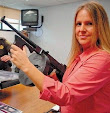Ninety-two years ago tonight, a triple shooting in St. Louis's Dogtown neighborhood gave one of the city's three Mafia factions one of the more quirky nicknames in American criminal history. The main target of the attack, a powerful
mafiùsu named Charlie Fresina, was struck by a .45 caliber submachine gun bullet in his lower hip. In the preceding weeks as he recovered, Fresina used a pillow to cushion his rear end when he sat down, leading sarcastic St. Louis police to dub his crew "The Pillow Gang."
 |
| St. Louis Post-Dispatch |
The Mafia
dicìna (crew) that would eventually be known as the "Pillow Gang" got its start in the early 1910s as a small-time Black Hand extortion ring run by Pasquale Santino, a Sicilian immigrant who used threatening letters to separate wealthy Italian businessmen from their money. After a series of arrests, Santino left St. Louis briefly and worked as a railroad foreman in eastern Ohio. After returning to town around the start of Prohibition, Santino began putting a crew of tough Sicilian mobsters together; like Pasquale himself, most of them were from the southern province of Girgenti (modern-day Agrigento). The one exception was Charlie Fresina.
Born Carmelo Frisina in 1892 in Castiglione di Sicilia, a small town located in the shadow of northeastern Sicily's Mount Etna, he immigrated to America at the age of sixteen. Frisina worked his way up from a vegetable peddler to a steamship agent and from there into the local Mafia. As he and the Santino crew began making big money in the illegal alcohol business, Frisina anglicized his name to Charles Fresina in order to shield his wife and children from his criminality. He would also later use the alias of "Freese" (pronounced
Free-zee). Fresina was brilliant and industrious, quickly working his way into the number-two position in Santino's
dicìna. By the early 1920s, the Santino crew had joined forces with the so-called "Green Ones," a crew of ex-Black Handers from western Palermo province led by Vito Giannola and Alfonse Palazzolo, to wrench control of St. Louis's Mafia family away from incumbent boss Dominick Giambrone.
In the aftermath of their victory, the Green Ones appropriated leadership of the family for themselves, with Giannola becoming
càpu (boss) and Palazzolo
suttacàpu (underboss). Their actions immediately created tension with the Santino crew. Also now added to the mix was a bootlegging gang headed by the Russo brothers, who were known as the "American Boys" because they were all native-born. While the St. Louis mob family had a traditional pyramidal leadership structure, the three different factions operated with a degree of autonomy not seen in other American Mafia groups of the era. Indeed, this peculiar arrangement led to constant bickering amongst the crew's leaders. Their organization as a whole suffered a big black eye in the view of other Mafia bosses around the country after losing a violent gang war to the South City-based Cuckoo Gang in 1926; Vito Giannola and the rest of the family's leaders were forced to give humiliating reparations to the Cuckoos as a condition of peace.
Their gangland defeat resulted in increased inter-family squabbling, as blame was shoved from faction to faction. The St. Louis Mafia inevitably devolved into civil war in the late summer of 1927 after two key members of the Russo Gang, Anthony "Shorty" Russo and Vincent Spicuzza, were lured to Chicago and killed by a Green Ones hit squad led by Alfonse Palazzolo. The Santino crew joined forces with the Russos to fight the Green Ones. Pasquale Santino was instrumental in luring Palazzolo to his demise at the hands of the Russos on Tenth Street, but he himself would die on November 17 after being shot in a grocery company office at Seventh and Carr streets. Police believed that he was killed by a Mafia assassin brought in from Chicago by the Green Ones specifically to do the deed.
 |
| Pasquale Santino (NARA) |
The murders, nearly a dozen in all, continued throughout the fall. Three days after Christmas, two members of the Russo Gang caught Vito Giannola at his girlfriend's North City house, chased him into an attic crawlspace, and proceeded to empty a Thompson submachine gun into St. Louis's Mafia boss. Giannola's dramatic assassination momentarily put leadership of the family up for grabs. What follows is an excerpt from my 2010 book
Gangs of St. Louis;
At the beginning of 1928, the Sicilian underworld was in a state of flux. The Russo Gang and its allies were waxing victorious after their decisive strike against the Greens. Fully aware that the war wasn't over yet, they stayed vigilant but were puzzled as the days rolled by with no retaliatory strikes from the opposition.
The Green Ones held a conference soon after Vito Giannola's funeral. John Giannola stepped down from his position in the crew, either by choice or with some persuasion. At this meeting, twenty-six-year-old Frank Agrusa was dubbed the new boss. Having spent many years under Vito's tutelage, Agrusa was a perfect choice. Learning from his predecessor's mistakes, Frankie knew that low profile was the way to go. While Vito liked to swagger down the street and let everyone know he was a gangster, Agrusa was the exact opposite. Frankie's new right-hand man was his longtime friend and partner Vito Impastato. Advising the new boss would be Tony Fasulo, who had taken Ben Amato's place as
consigliere after Pasquale Santino's murder. Dominick Italiano replaced John Giannola as the Green Ones' East Side liquor distributor.
Despite these leadership changes, the Green Ones were depleted and demoralized. Most observers were unsure if they could prevail in a protracted shooting war, especially now that the deadly Tommy gun had been added to the mix. For the time being, they seemed to be out of the fight. Machiavellian twists and turns are at the core of any Mafia war, and the St. Louis strife was no different. The deception and double-crossing is limitless. While Charlie Fresina was ostensibly allied with the Russo Gang, he was going behind its back and extorting wealthy merchants connected to the Russos. When Jimmy Russo got word of Fresina's shenanigans, he promptly began planning his murder.
 |
| St. Louis gangster Jimmy Russo. |
On the night of January 19, 1928, Fresina visited the Dogtown home of Charles Spicuzza at 6129 Clayton Avenue to exact a heavy tribute. The gang boss was backed up by Dominick Cataldo and Tony DiTrapani; the latter packed a sawed-off .12 gauge autoloader. A cousin of the late Vincent Spicuzza, Charles worked as the manager of the M. Longo Fruit Company on Commission Row, the store formerly owned by Charles Palmisano. While his wife and four children waited quietly in other parts of the house, Spicuzza talked with his visitors in the parlor and eventually gave Fresina over $1,000 cash.
 |
| Charles Spicuzza's home at 6129 Clayton Avenue as pictured in the St. Louis Star. |
A little after 10:00 p.m., the three men exited the front door and were just starting down the stairs when they noticed a strange Studebaker sedan at the curb. Even stranger was the fact that two men appeared to be sitting in their Chrysler sedan. One of the Santinos blurted, "Someone's in our car." Since the house sat high above the street, Fresina and his men couldn't clearly see the faces of the strangers. The mob boss immediately grabbed Spicuzza and forced him to walk down to the street to find out just who these fellows were.
The fruit merchant slowly walked down his steep steps with the Santinos trailing far behind him. When Spicuzza got close enough to recognize the familiar faces inside the Chrysler, he immediately broke right and ran for cover. As soon as he was clear, a fusillade of shotgun and submachine-gun fire erupted from the Chrysler. Fresina instantly turned to go back inside the house, only to be shot through the lower hip by a machine-gun round. DiTrapani was struck in the abdomen by the same stream of bullets (a slug chipped away the handle of a .38 revolver stuck in his belt). Tony spun around, stumbled inside the foyer and fell facedown on top of his unfired shotgun. Cataldo tried to follow Spicuzza but was hit by a .45 caliber bullet in his stomach.
The machine-gunner then exited the Chrysler and dashed up the stairs onto the porch. After strafing the fallen DiTrapani with a quick burst, he briefly scanned the house for any sign of Fresina. The mob boss suddenly popped around the corner of the living room wall and turned loose with a pistol. The machine-gunner briefly returned Fresina's fire and then, with his weapon either empty or jammed, quickly retreated down the steps. Charlie hobbled onto the porch and emptied his gun at his fleeing assailants, scoring a few hits on the parked Chrysler. Nevertheless, the killers made a successful getaway.
Police found Tony DiTrapani dead at the scene and Dominick Cataldo groaning in pain from a wound that soon proved fatal. Charlie Fresina was talking on the telephone in Sicilian when the cops arrived. The gangster stopped in mid-sentence and hung up, proclaiming that he didn't know who shot him. Charlie then went to the bathroom to wash him wound. Charles Spicuzza denied that he was being extorted, saying that he and Fresina had met to discuss the sale of some apples. Police initially suspected that the Green Ones were responsible; it wasn't until much later that they discovered that the true culprits were the Russo Gang. Now, all three Mafia factions were at war with one another.
 |
| Carmelo Frisina in a formal portrait taken not long after the shooting. Visible on the lower right side of the photo is the corner of the pillow in question. |
Postscript
Charlie Fresina eventually recovered from his wound and resumed his place at the head of the "Pillow Gang." Fresina often held court with his men at a Central West End restaurant at 8 South Sarah Street run by Armando Pacini. The mob boss would make headlines in August 1929 after firing a shotgun at federal agents who were in the process of raiding his Semple Avenue home. A year later, Fresina would be convicted of assault with intent to kill and sentenced to prison time. Just before he was due to head to jail, on May 8, 1931, Fresina was found shot to death behind the wheel of his car in an isolated forested area outside of Edwardsville, Illinois.
Dominick Cataldo and Tony DiTrapani were buried side-by-side in St. Louis's Calvary Cemetery.
Jimmy Russo continued his attempts to avenge the murder of his younger brother Shorty. Six months after the Dogtown ambush, Russo was lured to a meeting with the ostensibly neutral Cuckoo Gang in a disused chicken yard at Plymouth and Sutter avenues in what is now Wellston, Missouri. The Cuckoos sprung a ferocious trap and shot Russo and Mike Longo to death. Their companion, Jack Griffin, was wounded six times but managed to survive the attack.
Charles Spicuzza was reportedly inducted into the St. Louis family and worked as a bail bondsman for a number of years. Police questioned him after the May 1946 murder of Alma Ahlheim, who was reportedly Spicuzza's girlfriend; the mobster was apparently upset that she was seeing other men behind his back. No charges were filed. Spicuzza died of natural causes on January 19, 1978, the fiftieth anniversary of the shooting which gave the Pillow Gang its name.
Sources
Waugh, Daniel.
Gangs of St. Louis: Men of Respect. The History Press. 2010.
St. Louis Post-Dispatch, January 20, 1928, May 17, 1946, January 22, 1978.
St. Louis Star, January 20, 1928.
















